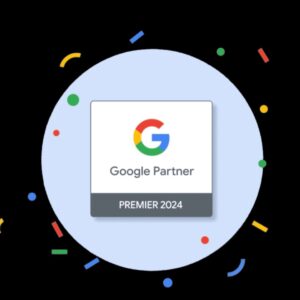In a moment of operational uncertainty, urgent care marketers can double down on testing post-pandemic behavior and activity for patients.
The past year has been an undeniably challenging one for urgent care centers. The relative upside of the pandemic is the high demand for urgent care driven by new patients entering clinics. Now, with vaccination levels reaching peaks to spur reopening — as seen in states like New York and California — a huge opportunity exists for marketers to maximize on this. They need to focus on converting the high volume of first-time COVID-19 testing customers, that came in based on an acute need, into repeat visitors for more traditional, revenue-enhancing visits that improve bottom lines across the urgent care industry.
But how can marketers connect the dots and truly measure ad effectiveness relative to the conversions they need? This is the fundamental question for every marketing professional, and yet, in this case, the answer is obvious. The key to true conversion at this moment for decision-makers in the urgent care industry lies in the ability to effectively deploy control group testing, which proves marketing ROI[amsive_tooltip term=”return-on-investment”].
Be in Control
Control group[amsive_tooltip term=”control-group”] testing can help marketers answer how much a particular marketing campaign actually affects customer behavior, as well as helps identify how much opportunity there is to target the right customers. In the urgent care industry’s case, control groups can empower brands to know whether customers would have come in anyway due to COVID-related factors, or whether they are truly new acquisition customers that have been driven by advertising efforts.
But marketers cannot assume that because of the volume that came through with COVID that these audiences are aware and know about their particular business. Utilizing control groups allow marketers to adjust for those people and recognize that the pandemic helped raise awareness, but prove that advertising can go above and beyond that to translate into higher revenue and sustained profitability.
Let’s look at a hypothetical scenario:
A marketing team sends out a campaign, and at the end of the predetermined cycle, they find that their analytics show high conversion[amsive_tooltip term=”conversion”] rates that result from the campaign. Their initial takeaway is that perhaps the particular messaging, channel preference, touchpoint cadence, or more from that campaign drove the increase. But that one-size-fits-all assumption doesn’t tie particular attribution to any of those factors within the campaign. Marketers need to know what drove the conversion to allocate budget and measure effectiveness.
So, let’s say those same marketers send the same campaign, but hold out a control group among the full intended audience. If the control group and the group exposed to the campaign have similar conversion rates, audiences behaved the same way regardless of whether they were sent the new campaign or not. It’s time to rethink aspects of the campaign to get better-targeted conversions.
Marketers cannot assume that because of the volume that came through with COVID that these audiences are aware and know about their particular business.
Controlled Insights
Here’s where we can use our own real-time insights to highlight the effectiveness of control groups — especially for urgent care.
Our process involves onboarding a control group out of the intended customer base to see whether urgent care clinics should continue advertising despite visits being at an all-time high. Using digital display advertising[amsive_tooltip term=”banner-ad”] as an example, we segmented audiences into:
- An exposed group: Those that would be exposed to the campaign.
- A control group: In this case, we used a method called “PSA (public service announcement) control groups.” Instead of basic hold-out groups where you don’t show them the campaign altogether, this method shows them a different set of digital ads that are completely random and not necessarily urgent care related. This ad-responsive group may have seen the campaign display ads and might have visited the clinic anyway.

Each bar in the graph above represented total monthly display advertising attributed visits in more than 200 urgent care clinics that continued advertising since the outbreak in March 2020. Those that might have visited the clinic without the display ads are shown in green while the group that visited that saw ads (the ones that are attributed conversions) are in blue.
Despite record visits, advertising still attracted many patients that would not visit clinics otherwise. It may initially seem like the green control group numbers remain larger over the blue exposed group, meaning the ads weren’t effective. It in fact demonstrates that we recognize that factors other than our campaigns drive high conversions but we almost always see a lift over control, otherwise known as the percent increase or decrease for users who received a campaign versus a control group. In this case, 57 percent of those were specifically targeted by the advertising.
We can use our own real-time insights to highlight the effectiveness of control groups — especially for urgent care.
It proved there is a viable amount of people with a need for urgent care services — be it because of COVID or not — and it’s the urgent care marketers’ opportunity to capitalize on those audiences and the people that converted to get them back through the door.
Calls to Action
To compete and win to convert the high volume of first-time COVID-19 testing customers, urgent care brands must:
- Strike quickly in this period of behavioral change, to create longer-term urgent care customers with the right messaging and creative.
- Apply the power of control groups to pinpoint patient conversion and achieve the best return on marketing investment.
Agencies like Amsive are able to track[amsive_tooltip term=”lead-tracking”] and measure specific promotional activities via campaigns across the control group and the exposed group, with the difference between the two providing insights into how effective and profitable your campaign is.
In the case above, our advanced analytics were able to help create the most strategic approach for gaining new patients or connecting with existing patients at times of potential need. These targeted audiences within the entire control testing campaign represent an opportunity to identify and eliminate unnecessary marketing spend, as well as remarket for additional visits in the future. Using this data, we provided marketing support that included testing and proving the viability of display ads in this opportune moment across the urgent care industry.





